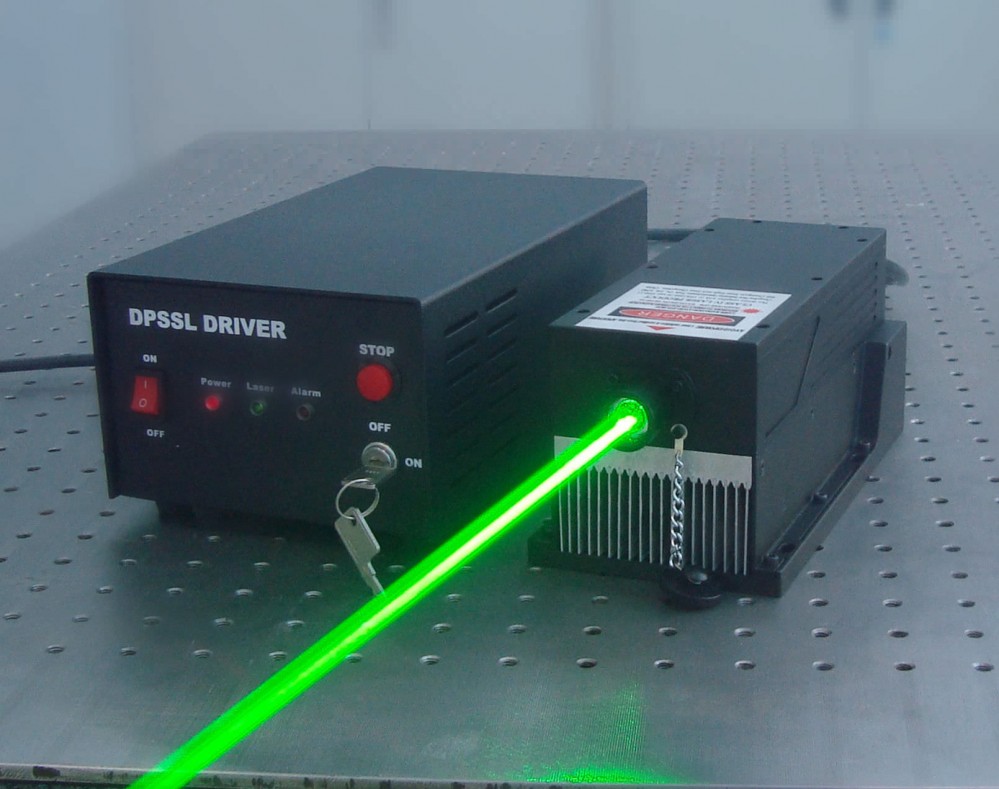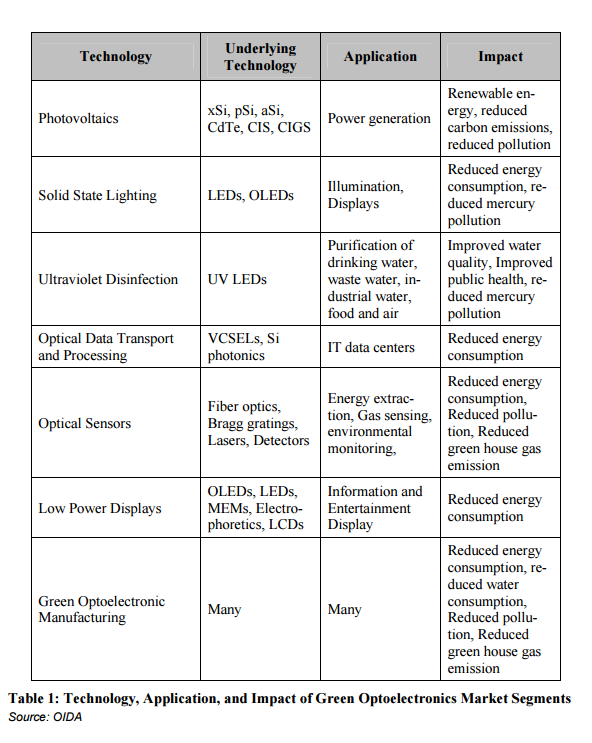Optoelectronics, aka “optronics,” is generally the use of visible light and circuitry in electronics and is part of the field of photonics. Optronic devices source, detect, and control light and convert electricity to light and vice versa, via semiconductors made of solid crystalline materials. Invisible light such as radiation, ultraviolet, and infrared are also used. Typical optronic equipment includes LEDs, optical sensors, photodetectors, plasma displays, and more.
Market for Green Photonics Technologies Growing
According to the Optoelectronics Industry Development Association (OIDA), the worldwide market for optoelectronics has been growing at a CAGR of 3.1% per year and will continue on this trajectory, reaching $500 billion in 2020. All told, the Green Photonics market represents about 8% of the overall optoelectronics market or about $40 billion.
Green Photonics refers to optoelectronic components that:
- Generate or conserve energy
- Reduce greenhouse gas emissions
- Reduce pollution
- Yield an environmentally sustainable outcome
- Improve public health
The following chart shows the main market segments for green optoelectronics:
Clearly, the adoption of optoelectronics leads to reduced energy consumption, reduced water consumption, reduced pollution, and reduced greenhouse gas emissions.
Promotion of Optoelectronics
The OIDA and an industry-led consortium of companies in Optoelectronics work together with universities and research laboratories in Optoelectronic research, collaboration, and knowledge sharing.
References and related content:








